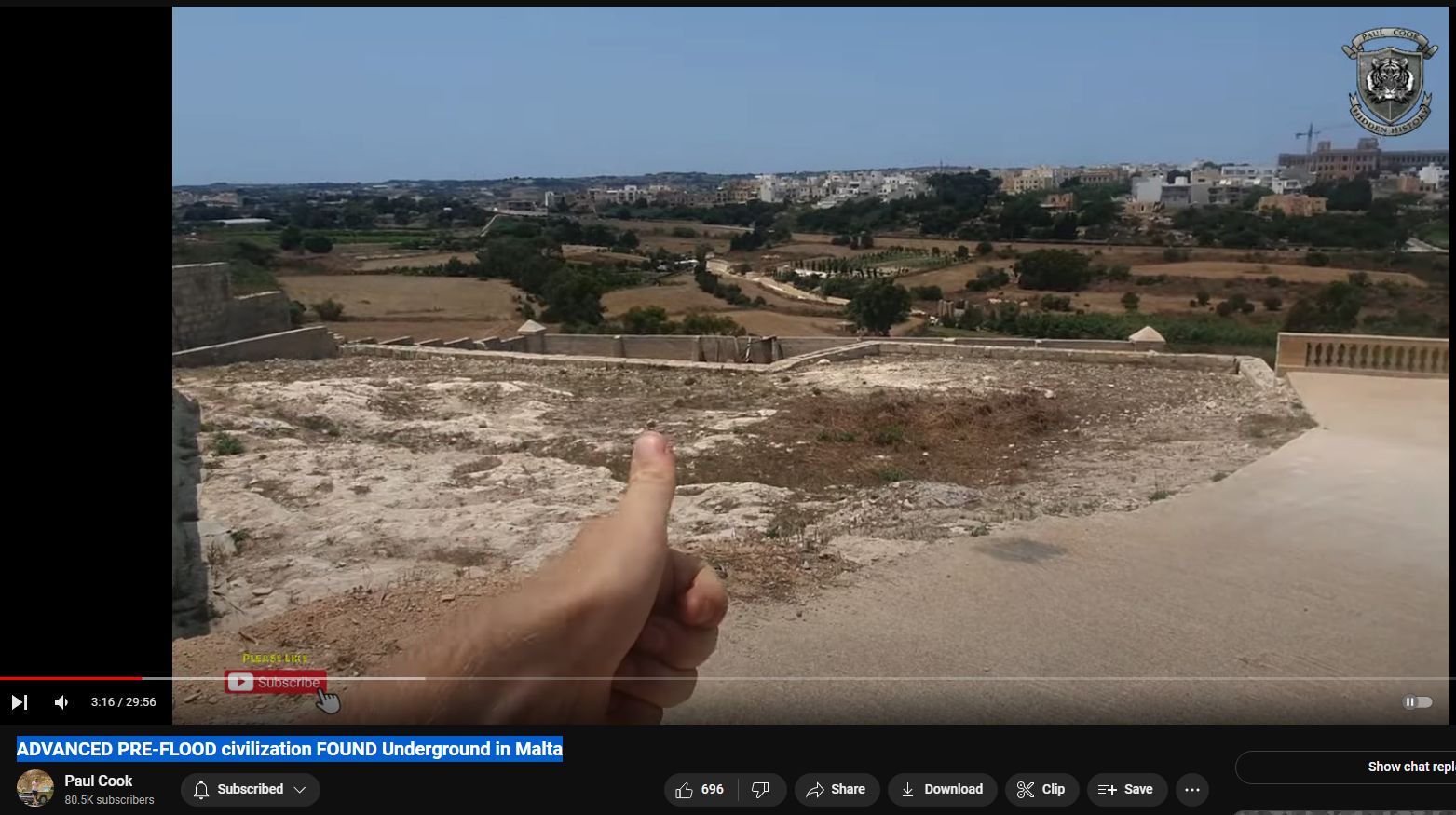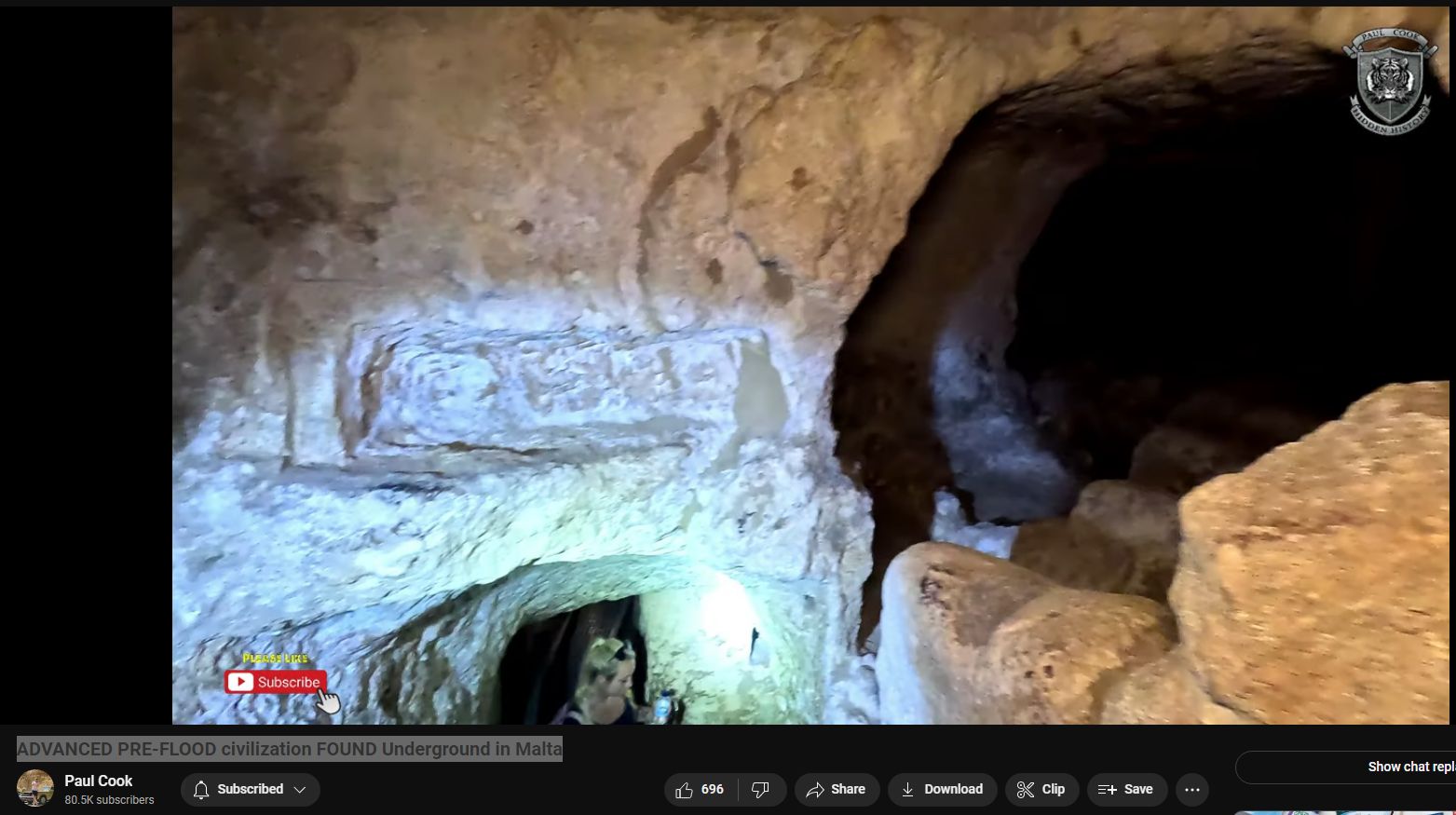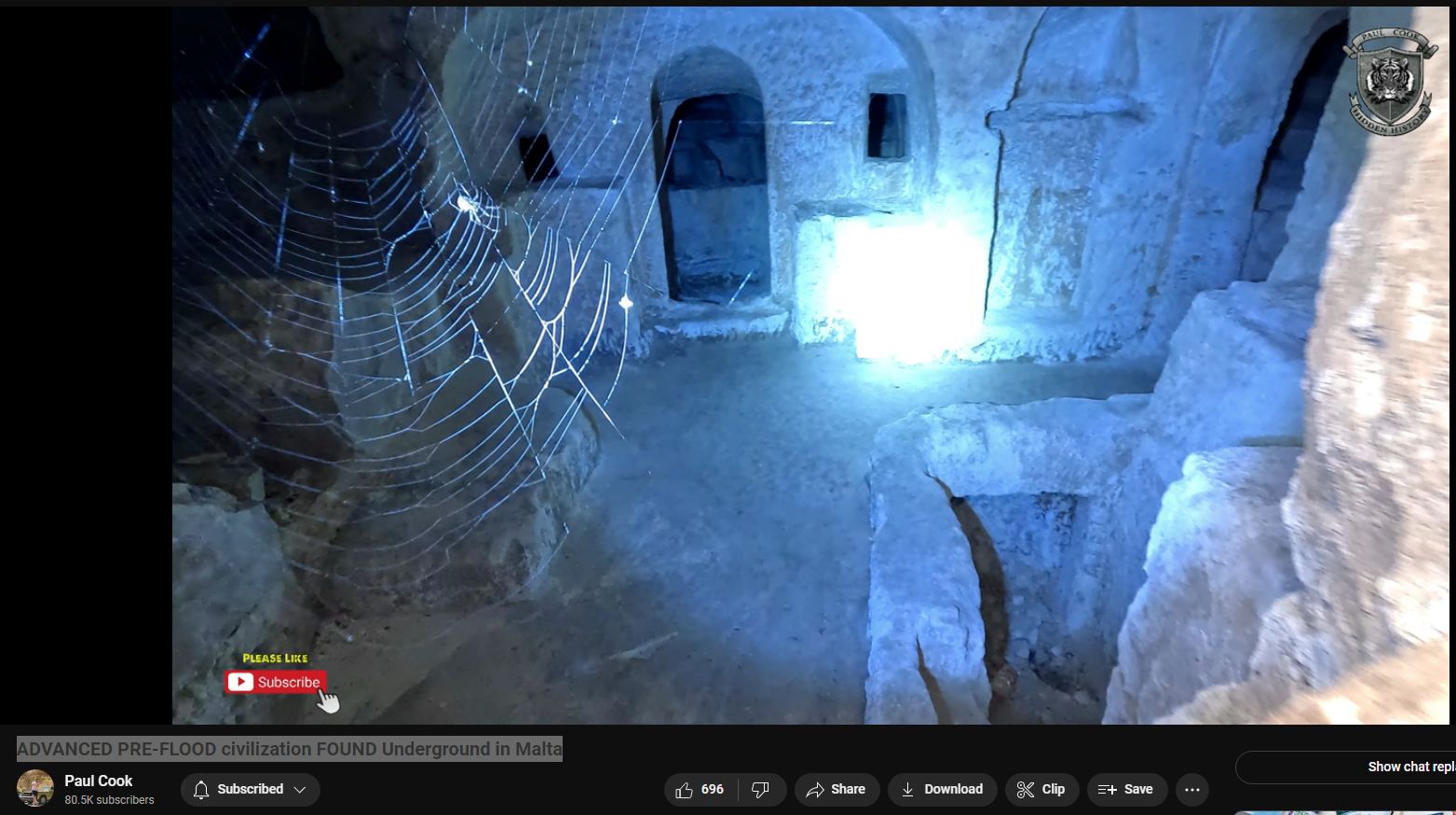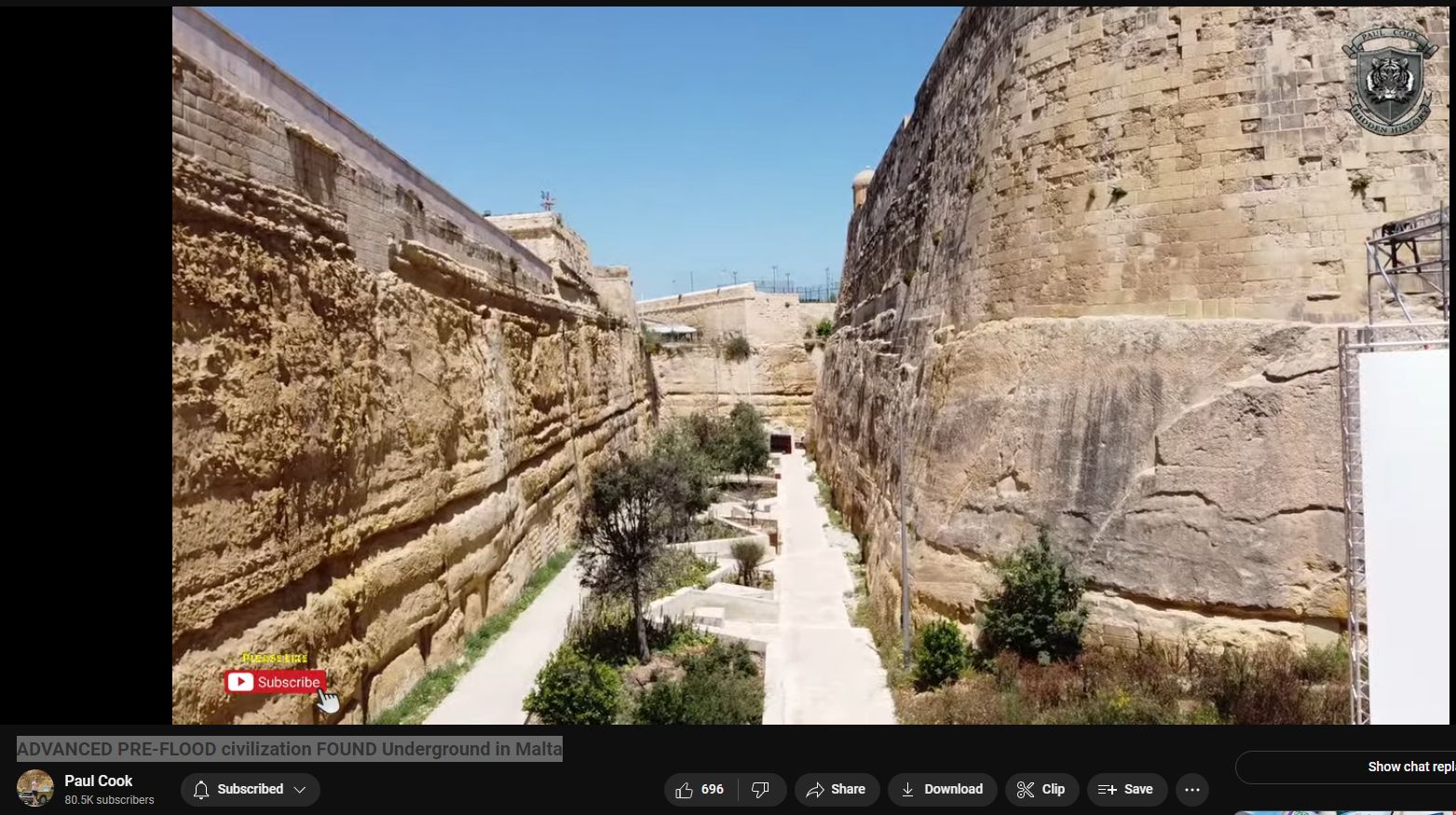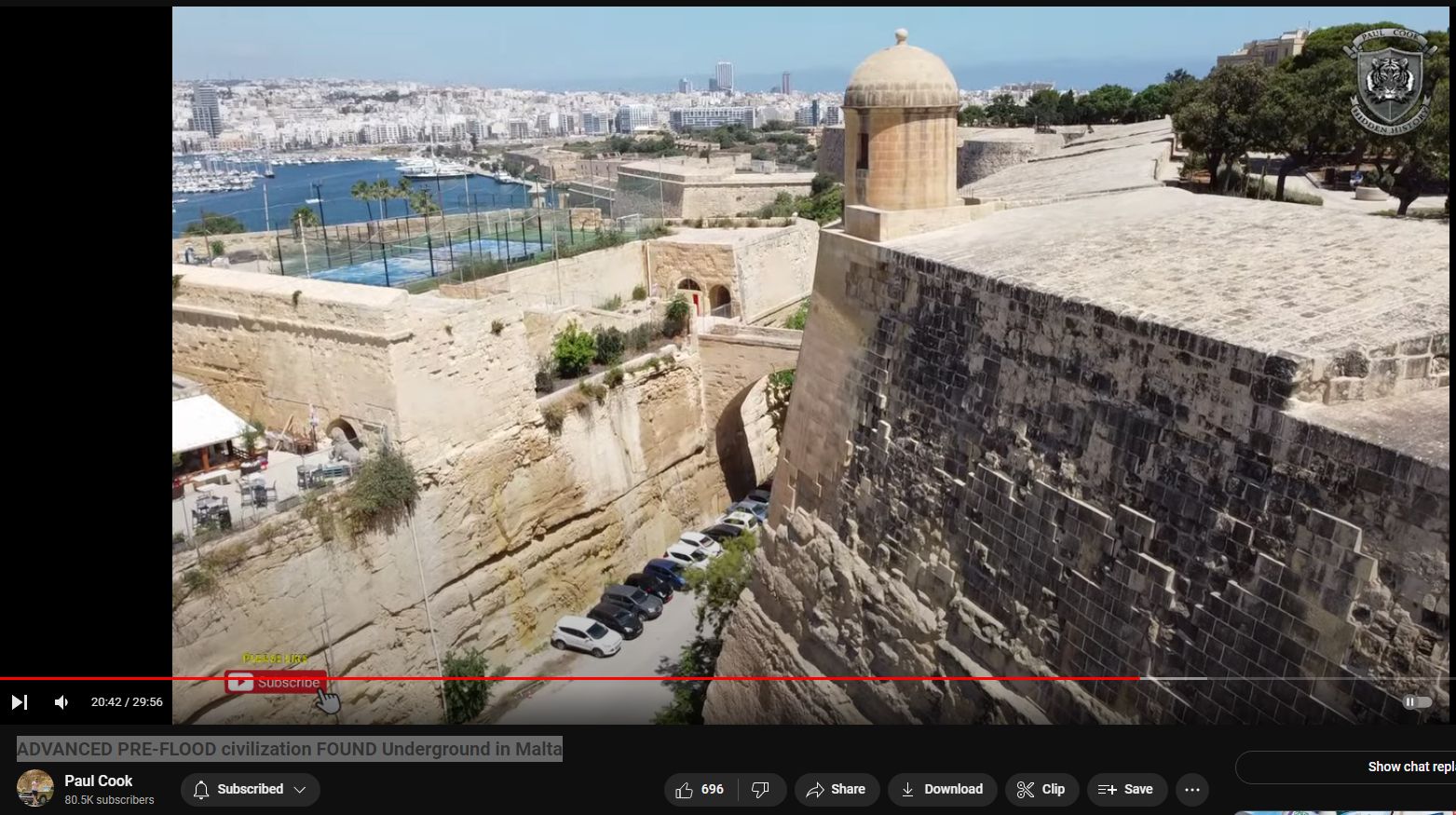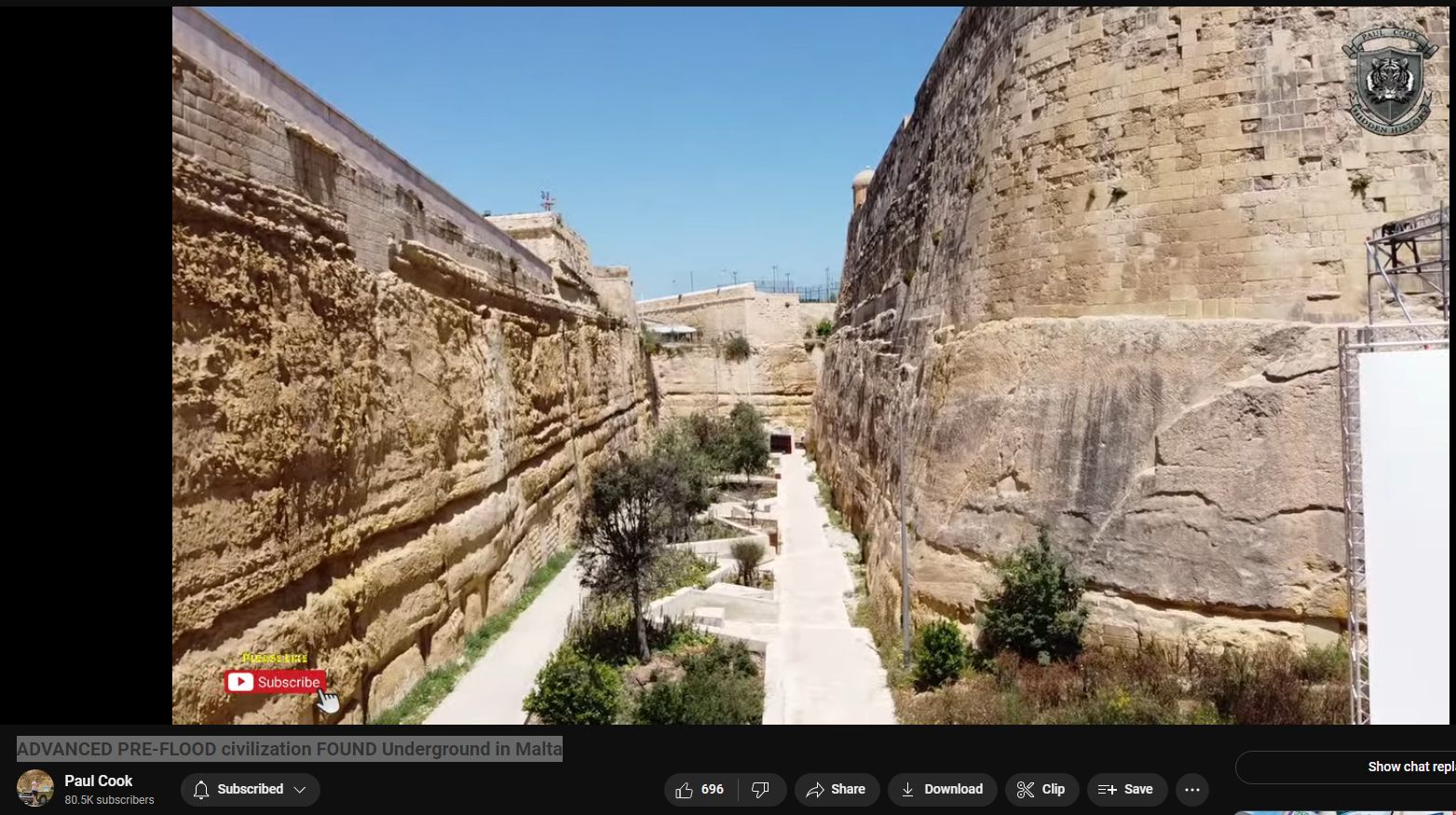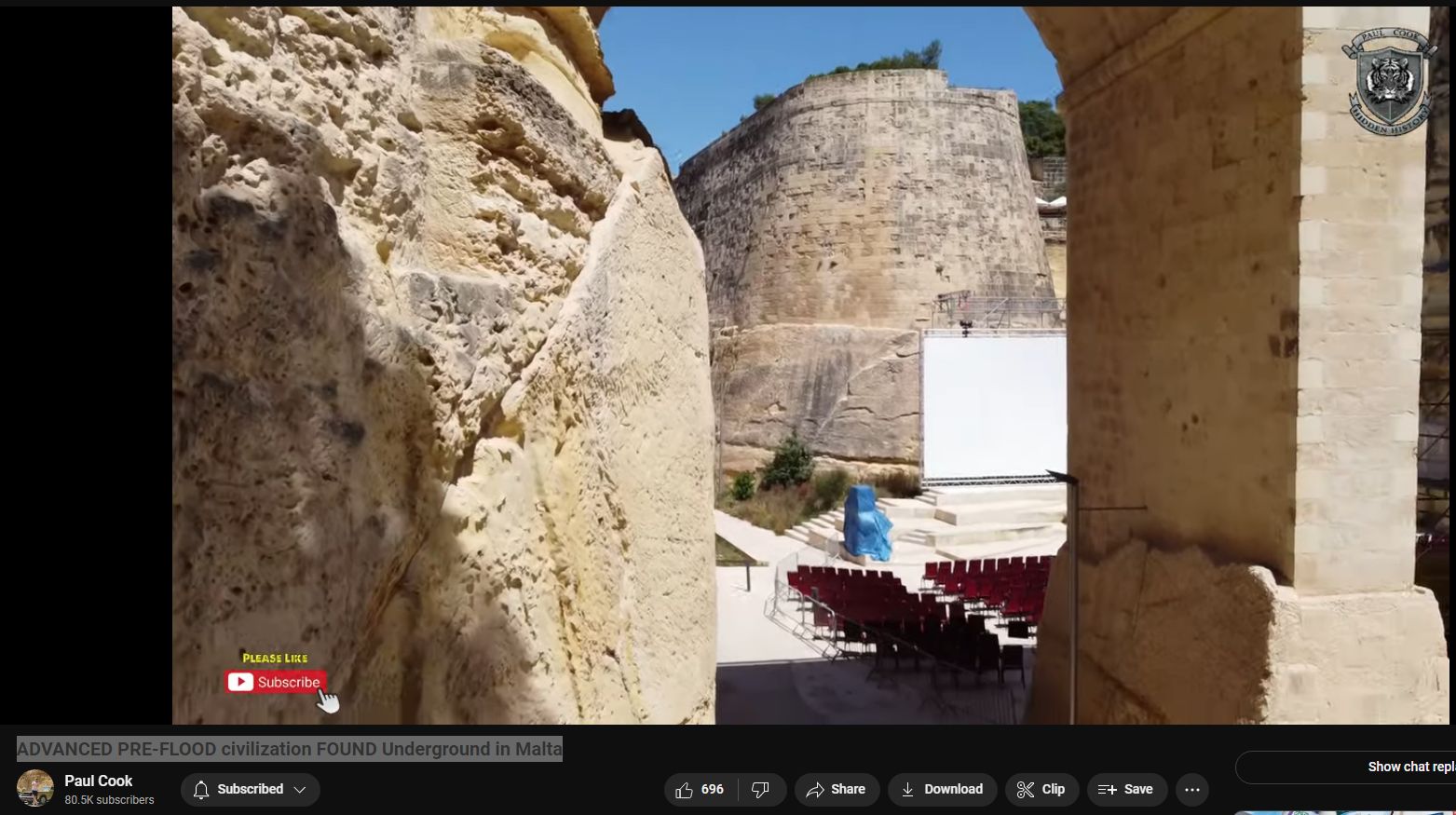https://www.youtube.com/watch?v=cxW4435TRrU
Multiple-level underground complex, built with geopolymer, mudflooded/covered, forgotten.
CGPT — Malta has a rich archaeological history, with sites dating back to the Neolithic period. The Ġgantija temples, for example, are among the oldest freestanding structures in the world, dating back to around 3600 BCE. These temples, along with other megalithic structures found on the islands, attest to the advanced skills and organization of ancient Maltese societies.
CGPT —
